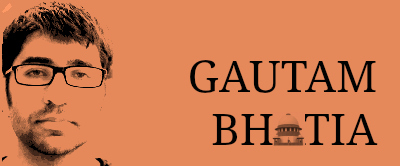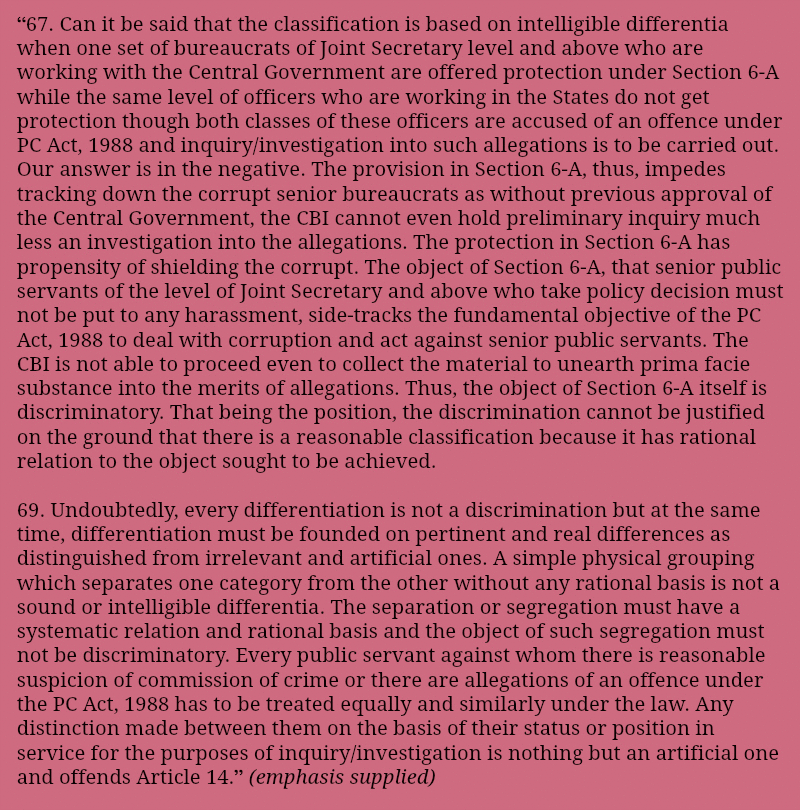 The death sentence, one of the punishments provided under Section 53 of the Indian Penal Code, 1860 is increasingly becoming redundant. By an order dated January 21, 2014, the Supreme Court commuted the death sentence of thirteen convicts on the grounds of inordinate delays in deciding on the mercy petition.
The death sentence, one of the punishments provided under Section 53 of the Indian Penal Code, 1860 is increasingly becoming redundant. By an order dated January 21, 2014, the Supreme Court commuted the death sentence of thirteen convicts on the grounds of inordinate delays in deciding on the mercy petition.
Under Article 72 and Article 161 of the Constitution of India, the President and the governors respectively, have the power to “grant pardons, reprieves, respites or remissions of punishment or to suspend, remit or commute the sentence of any person convicted of any offence”. Durga Das Basu has stated that the object of the power of pardon by the President of India was to “correct judicial errors for no system of judicial administration can be free from imperfections.” This power however, instead of correcting judicial lacunae, has prevented victims from receiving true justice by allowing politics to affect decisions.
The President and the governors have to exercise their power to pardon on the advice of the Council of Ministers. Since the power has not been exercised expeditiously, a large number of mercy petitions are pending with the President of India. This callousness has resulted in unreasonable delays in the execution of the death sentences. Death row convicts languish in jail for more than twenty years under constant fear of death and the subsequent execution of the death sentence is cruel and barbaric.
 The procedure commences with the filing of a mercy petition with the President under Article 72 of the Constitution. The petition is sent to the Ministry of Home Affairs in the Union Government (“the Ministry”), where the judicial division has been tasked with giving its recommendations on the petition in consultation with the concerned sate government. Thereafter, the mercy petition, along with the Ministry’s recommendations, is sent to the President’s Secretariat for a final decision. Sometimes however, even after the Ministry has made its recommendations, the President’s Secretariat does not act on the petition for an inexplicably long time.
The procedure commences with the filing of a mercy petition with the President under Article 72 of the Constitution. The petition is sent to the Ministry of Home Affairs in the Union Government (“the Ministry”), where the judicial division has been tasked with giving its recommendations on the petition in consultation with the concerned sate government. Thereafter, the mercy petition, along with the Ministry’s recommendations, is sent to the President’s Secretariat for a final decision. Sometimes however, even after the Ministry has made its recommendations, the President’s Secretariat does not act on the petition for an inexplicably long time.
Afzal Guru was convicted for attacking the Parliament of India in 2001. The Supreme Court confirmed his death sentence on August 4, 2005 and the date for his execution was fixed for October 20, 2006. His wife filed a mercy petition on January 4, 2006 before the President who sent it to the Ministry of Home Affairs on October 4, 2006 for its recommendations. A curative petition filed by Mr. Guru in Supreme Court was disposed of on January 12, 2007. Shivraj Patil, who was the Home Minister of India at that time, while responding to a question about Mr. Guru’s mercy petition in the Rajya Sabha said, “After having seen the figures for last ten years, I would like to inform you that no mercy petition has been decided before six years, seven years….”. After eight long years, the President rejected the mercy plea on February 3, 2013. Mr. Guru was executed on February 9, 2013. In this entire process, a lot of time is spent in sending the file from one department to another and vested interests and political considerations influence the final decision.
The Supreme Court’s January 21 order came in the case of Shatrughan Chauhan and Another v. Union of India and Others, 2014 (1) SCALE 437, where it framed guidelines for safeguarding the interest of death row convicts. Fifteen death row convicts had filed a writ petition seeking relief against the alleged infringement of their fundamental rights on account of the executive’s failure to dispose of mercy petitions within a reasonable time. Allowing the writ petitions and commuting the sentence of death of the petitioners to imprisonment for life, the Supreme Court observed that the right to seek mercy under Articles 72 and 161 of the Constitution is a constitutional right and not at the discretion or whims of the executive. Therefore, “when the delay caused in disposing the mercy petitions is seen to be unreasonable, unexplained and exorbitant, it is the duty of this Court to step in and consider this aspect.” Thereafter, the Supreme Court, in February 2014, asked the government to include delay as a criterion in deciding the mercy petition of a death row convict. The Court said that “the clemency procedure “provides a ray of hope” to the condemned prisoners and their family members for commutation of death sentence to life imprisonment. Therefore, the executive should step up and exercise its time-honoured tradition of clemency power guaranteed in the constitution one way or the other within a reasonable time.”
The Central Government is likely to file a curative petition against this decision of the Supreme Court. In a more recent decision, Navneet Kaur v. State of NCT of Delhi and Another, the Supreme Court commuted the death sentence of Devender Pal Singh Bhullar, a Khalistani terrorist accused in the 1993 blasts in Delhi, to life imprisonment both on the ground of inordinate delay of eight years in the disposal of the mercy petition and on the ground of insanity. As a result of such leniency, a number of hardcore convicted offenders including the assassins of Rajiv Gandhi and close aides of the forest brigand Veerappan have been freed from the gallows. This has resulted in injustice to the victim or his family members.
The research done by Bikram Jeet Batra, an independent lawyer and researcher, shows that until 1980, mercy petitions were decided within a minimum of fifteen days and a maximum of ten to eleven months. From 1980 to 1988, the time taken for the disposal of mercy petitions gradually increased to an average of four years. Now, we even see delays that extend up to twelve years.
Judicial review of mercy petitions
The Supreme Court has been of the opinion that even though the power of pardon exercised by the President and the Governor is above judicial review, its manner of exercise is certainly subject to judicial review. In Epuru Sudhakar and Another v. Government of Andhra Pradesh and Others, (2006) 8 SCC 161, the Court listed the grounds on which a decision under Articles 72 or 161 may be judicially reviewed. They include:
a. Whether the order has been passed without application of mind,
b. Whether the order is mala fide,
c. Whether the order has been passed on extraneous on wholly irrelevant considerations,
d. Whether relevant materials have been kept out of consideration, and
e. Whether the order suffers from arbitrariness.
The courts therefore, do not interfere with the decision of the executive on merits but retain the limited power of judicial review to ensure that all the relevant materials are considered before the decision is made.
After Shatrughan Chauhan therefore, the question that arises is whether the judiciary exceeded its power of judicial review. The pardoning power conferred on the executive by the Constitution is a discretionary power and the judiciary seems to be curtailing it and substituting it with its own discretion. The solution would be to prescribe a time limit within which the executive ought to decide the mercy petition.
Richa Kaur is part of the faculty at myLaw.net.








